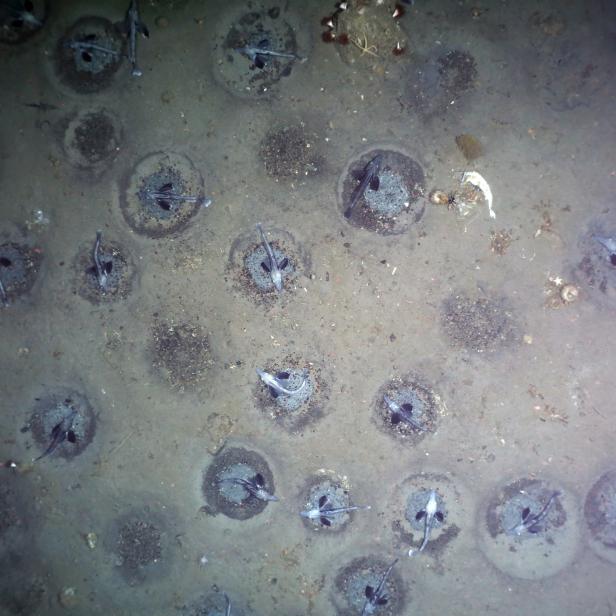
Polar Researchers Discover World’s Largest Fish Breeding Colony
Scientists aboard the German research vessel Polarstern have found the world’s largest fish breeding ground containing around 60 million nests.
Camera images from the Antarctic Ocean floor showed tightly packed icefish nests stretching across a 92 square mile (240 sq km) area. Each nest had between 1,500 and 2,500 eggs.
Deep-sea biologist Autun Purser said the crew made its exciting discovery in February 2021 while towing their car-sized camera system just above the floor of the Weddell Sea, up to 535 meters (1,750 feet) below. Nests were packed in, with sometimes one or two per square meter. Only small clusters had previously been found in the region.

David Hecker
The Polarstern research vessel, a ship of the Alfred Wegener Institute for Polar and Marine Research, became a Multidisciplinary drifting Observatory for the Study of Arctic Climate (MOSAiC), in which scientists studied the effects of the warming climate on ice floes of the Arctic.
Icefish are an unusual species that thrive in the extremely cold conditions of the Antarctic Ocean. They produce biological antifreeze in their bodily fluids called glycoproteins that surround any ice crystals to stop them from growing, even in supercooled Antarctic seawater at -2C (28.4F).
Polarstern’s researchers mapped the distribution and density of nests and combined the results with other ocean and biological data. Together it showed that the fish are attracted to an area of warmer water caused by the process of upwelling, where cold water and nutrients rise leaving the depths warmer.
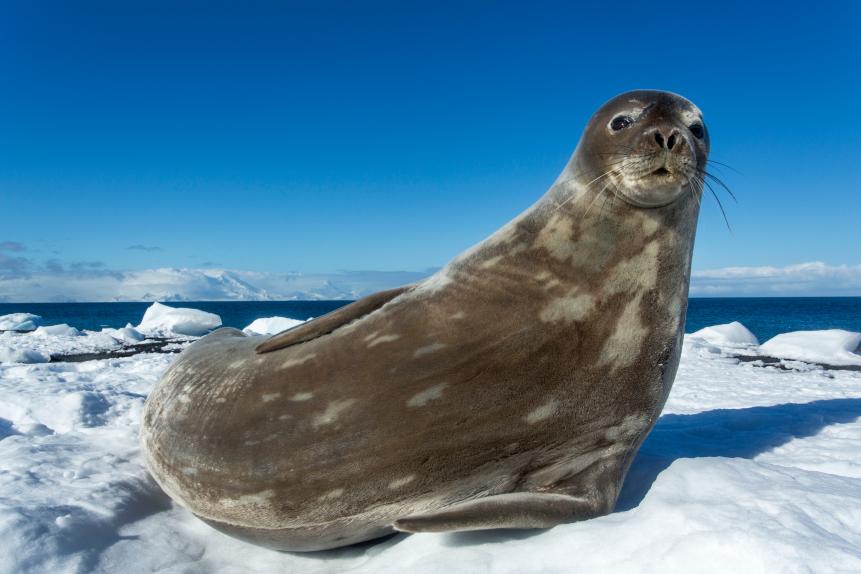
Paul Souders
Antarctica, South Shetland Islands, Weddell Seal (Leptonychotes weddellii) resting along the snow-covered shoreline on Deception Island.
The icefish breeding grounds are popular with all sorts of species including Weddell seals. Data from seals fitted with transmitters showed that 90 percent of their diving activity took place around the fish nests. So much activity around the nests makes researchers think the seals are probably using the icefish as a ready source of food.
Scientific teams have been surveying the Weddell Sea from the Polarstern since the early 1980s. The ship’s ice-breaking abilities make it ideal for marine research in polar waters. Previous missions include the Mosaic Expedition, where it spent a year drifting through the Arctic Ocean ice to study marine life and climate change.
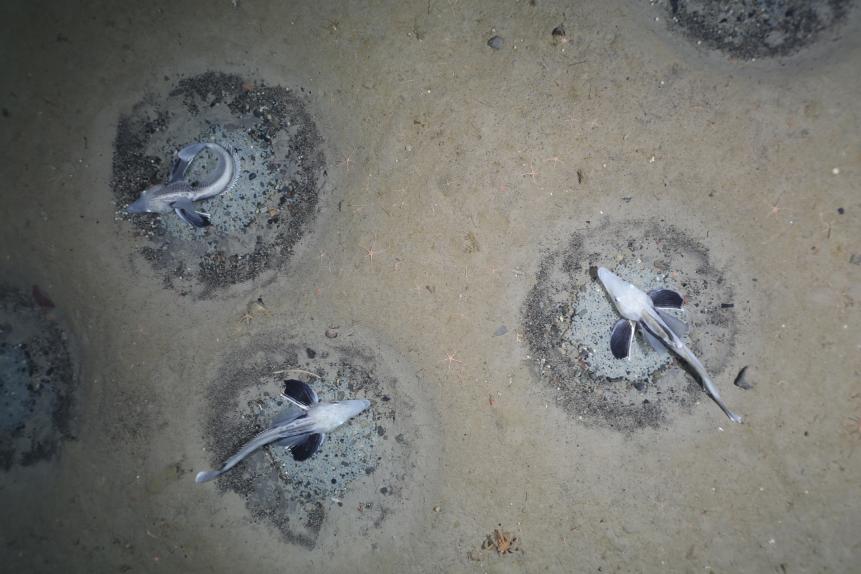
A research team from the Alfred Wegener Institute recorded more than 10,000 nests of the ice fish Neopagetopsis ionah with a camera system at the bottom of the southern Antarctic Weddell Sea. Analysis of the density of fish nests and area size suggest about 60 million actively breeding fish - the largest fish colony ever described worldwide.
And in 2021 the Polarstern navigated its way around the A74 mega-iceberg to record conditions and sea life after the iceberg sheared away from the Brunt Ice Shelf. The breakaway ice block was estimated to be 500-square-miles in size. Its movement left areas of seafloor exposed to sunlight and wind for the first time in 50 years, allowing Polarstern to study the area before any changes set in.
Scientists at the Alfred Wegener Institute (AWI), which runs the Polarstern and other research vessels, say the fish nest discovery shows the importance of creating conservation areas in Antarctica.
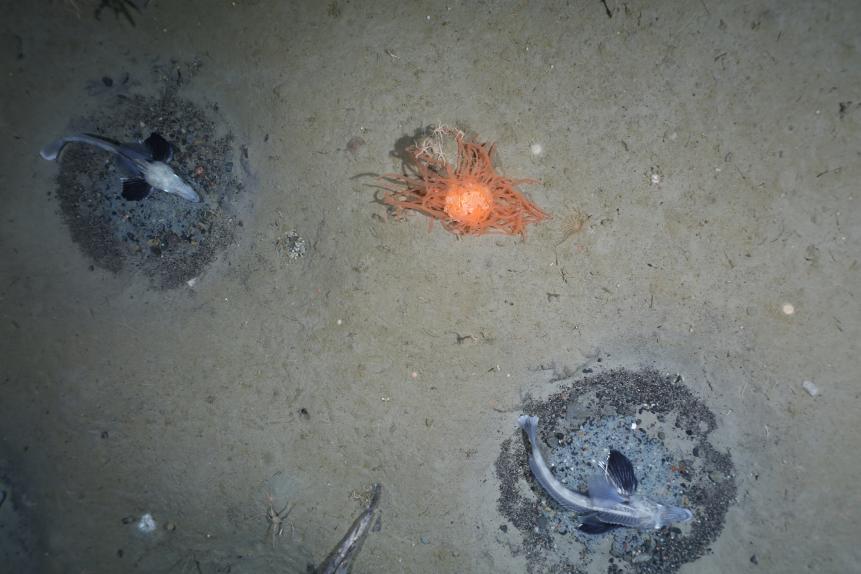
Icefish nests on the seafloor.
“It shows how important it is to be able to investigate unknown ecosystems before we disturb them,” said AWI director Antje Boetius. “Considering how little known the Antarctic Weddell Sea is, this underlines all the more the need of international efforts to establish a marine protected area.”
The risk to the icefish is thankfully still low. Fishing is strictly regulated in the Antarctic Ocean, plus reaching the icefish nests would need an ice-strengthened or icebreaker ship. “So far, the remoteness and difficult sea ice conditions of this southernmost area of the Weddell Sea have protected the area,” said Boetius. “But with the increasing pressures on the ocean and polar regions, we should be much more ambitious with marine conservation.”









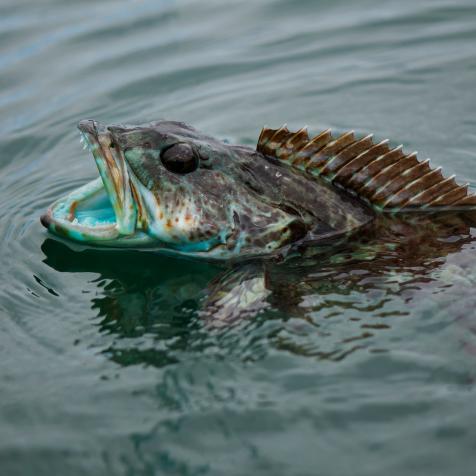
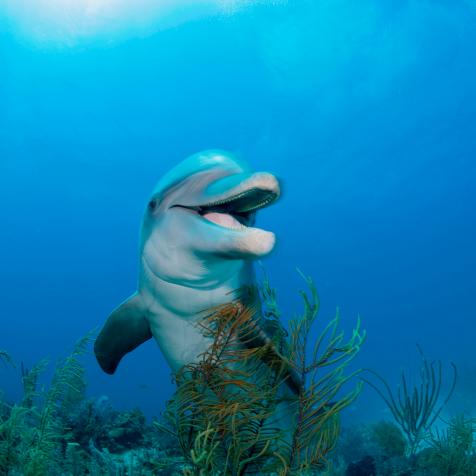


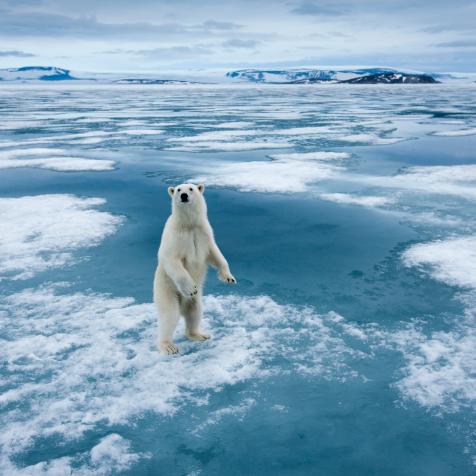

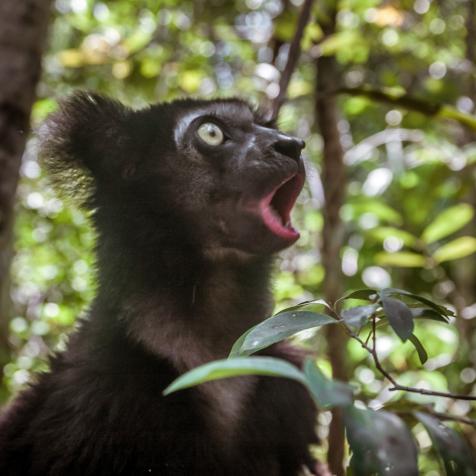
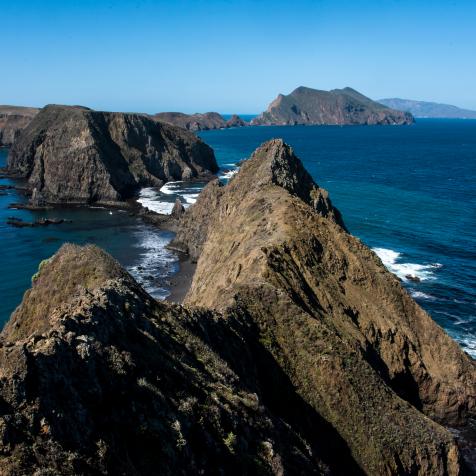

.jpg.rend.hgtvcom.476.476.suffix/1633031314945.jpeg)